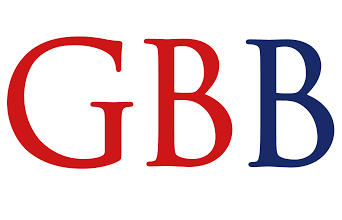What Generation Z and millennials expect: Here’s how to give it to them

With 43% of Generation Z and millennials planning on increasing credit card spending, financial services providers have a clear incentive to learn the changing preferences of this increasingly influential group. Episode Six understands them and has the technology to provide value, head of sales excellence Kallan Hogan said.
Hogan is uniquely positioned to help Episode Six’s clients adapt to this new reality. Over two decades, mainly at American Express and Mastercard, he’s worked in card design, launch and issuance while helping issuers innovate.
Now is the time to innovate; millennials and Generation Z will represent 70% of the workforce by 2030. Companies with older clients like Amex need to replenish their client base quickly.
Generation Z and millennials are changing the definition of primacy
How are millennials and Generation Z different? They’ve grown up digitally and know nothing else. According to some research, they’d rather have a root canal than visit a branch. A poor digital experience is simply a deal breaker.

They’ve changed the concept of primacy. Hogan said millennials and Generation Z compartmentalize their spending with different accounts for different purposes. This has fostered a surge in single-use virtual cards, which younger groups use to try out new products and subscriptions (those cards protect consumers from automatic renewals). Compartmentalization also helps those with second jobs track revenue and expenses.
Millennials and Generation Z invest more than any other generation. With inflation and house prices, many see investing as the only way to get ahead.
They present security challenges. While older cohorts tolerate one-time passwords and other strategies, these groups won’t. They abhor friction and prefer biometrics. This could drive a movement toward a combination of tokenization and biometrics.
Younger consumers are happy to support environmentally-conscious initiatives, especially when they are convenient and offer something in return. Perhaps it’s a green ETF. They also like rewards and are open to new types.
Hogan said Episode Six helps clients adapt to the needs of millennials and Generation Z by providing cloud-native, single-code solutions that complement their cores. That allows them to offer more products in the pursuit of primacy. Virtual accounts? Single-use virtual cards? Rewards messaging? Clients can choose the options they need.
The return of innovation?
Legacy institutions want to innovate, but it’s hard, Hogan explained. However, he senses a change.
“I’m seeing a rise in fintechs and banks wanting to go back to the 90s to launch and iterate, to do testing and to get that right,” Hogan said. “The legacy providers have to be looking for new partners, and they don’t want to rip out the core because that’s too distractive; it takes too long.
“When people say banks aren’t innovative, it’s not true. They’re in this doom cycle of innovation where they have quarterly releases; 90% of it is compliance.”
He added that that leaves little time and energy to take the necessary steps to innovate. That means no testing, adjusting and repeating. Politics and fatigue foster safer bets.
It’s through compliance
How does Episode Six direct the discussion toward innovation? Hogan said it’s by simplifying compliance. Show how 16 AWS centers eliminate on-prem outages that sap productivity and responsiveness. Describe how the single-code base supports audits and tracking, tools legacy technology doesn’t have. A compliance-first focus lowers operational expenses and gives companies time to test, iterate and deliver innovative products.
“The selling point, and where we’ve been very successful, is because we’re ledger, because we’re issuer processing, and that is very complicated. A lot of payment aspects are held up there. Because we’re CMS and because we are a sidecar to their existing core, they can be more compliant. They can have lower opex, and they can innovate.”
“If you’re using that legacy provider, and you’re not the largest provider in the world, you are cross-subsidizing your competitor because they’re getting the same technology with better engineers at a lower price,” Hogan warned. “The only way you can compete is on brand and marketing spend because your product will be, at best, the same, or in reality, the same at a high cost. That is the doom cycle of innovation.”
Financial services providers can have it all. They can be compliant, lower their opex, innovate and meet the needs of Generation Z, millennials, and everyone else.
“This whole big bang thing has got to stop because nobody gets a product right the first time,” Hogan concluded.



